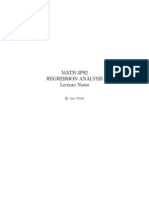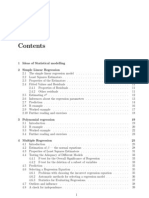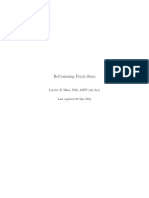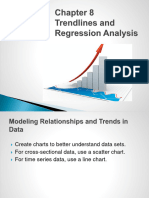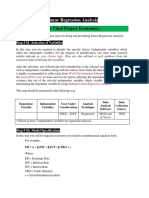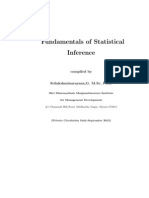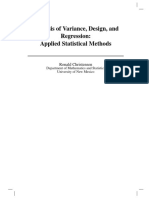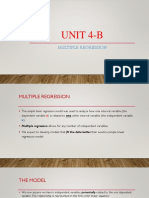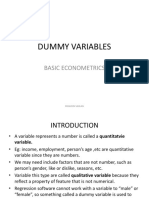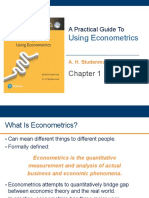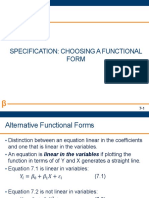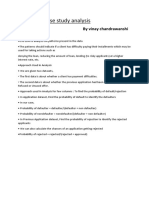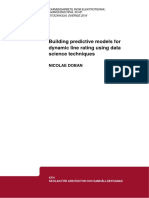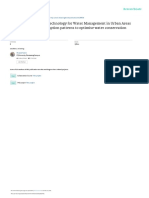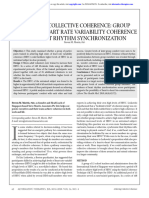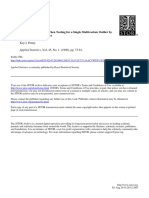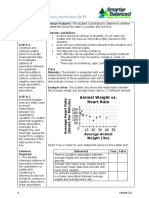0% found this document useful (0 votes)
353 views19 pagesChapter3 - Learning To Use Regression Analysis PDF
1) The document outlines the 6 key steps in performing regression analysis: 1) review literature and develop a theoretical model, 2) specify the model by selecting variables and functional form, 3) hypothesize expected coefficient signs, 4) collect and clean the data, 5) estimate and evaluate the model, and 6) document the results.
2) An example is provided of using regression to determine the best locations for a new restaurant chain. Independent variables like the number of competitors, local population, and average income are selected based on literature review. The model is estimated using existing restaurant data and provides expected results.
3) Regression analysis allows researchers to systematically test theoretical models using data. Close attention to specification, hypotheses
Uploaded by
ZiaNaPiramLiCopyright
© © All Rights Reserved
We take content rights seriously. If you suspect this is your content, claim it here.
Available Formats
Download as PDF, TXT or read online on Scribd
0% found this document useful (0 votes)
353 views19 pagesChapter3 - Learning To Use Regression Analysis PDF
1) The document outlines the 6 key steps in performing regression analysis: 1) review literature and develop a theoretical model, 2) specify the model by selecting variables and functional form, 3) hypothesize expected coefficient signs, 4) collect and clean the data, 5) estimate and evaluate the model, and 6) document the results.
2) An example is provided of using regression to determine the best locations for a new restaurant chain. Independent variables like the number of competitors, local population, and average income are selected based on literature review. The model is estimated using existing restaurant data and provides expected results.
3) Regression analysis allows researchers to systematically test theoretical models using data. Close attention to specification, hypotheses
Uploaded by
ZiaNaPiramLiCopyright
© © All Rights Reserved
We take content rights seriously. If you suspect this is your content, claim it here.
Available Formats
Download as PDF, TXT or read online on Scribd
/ 19







